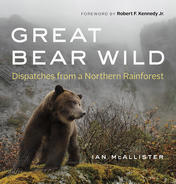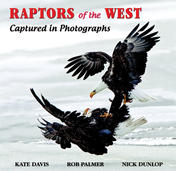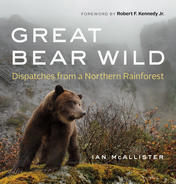Plants & Animals


Mountains of the Coast
On long trips in remote areas it is extremely important to be cautious at all times. This is a lesson I learned early in my climbing career - the hard way, unfortunately - during a hike up Hudson Bay Mountain above Smithers in 1977. A group of us had climbed up through the meadows from the ski area to gain the last ridge leading along to the summit. It was early in the summer, with the usual unsettled weather, and we walked on snow between the ridge crest and a huge cornice that hung out over the large cliffs on the east side of the mountain. At a flat point on the ridge it was my turn to lead and break trail for a while, but as I moved ahead the snow fractured and the entire area under my feet dropped like a trap door and sent me hurtling down the cliffs inside an avalanche of snow. The snow pounded and pummelled me in darkness until miraculously, at the bottom of the cliff, I was spewed out onto the glacier amidst piles of debris. I had injured my knee and sustained considerable internal bruising but otherwise I was unscathed. Incredulously I peered back up to the ridge crest 250 metres above, thankful to be alive.
Sometimes the route is obvious and at other times it remains mysteriously hidden, only to be discovered at the last minute. Every so often a maze of crevasses or a narrow ridge must be negotiated, but mostly there is a tremendous amount of up and down as we make our way through the alpine, climbing the steep sides of mountain after mountain. Often horizontal distances lose their significance and vertical relief becomes the governing measure of how far away a mountain is.
There is always a slow period after lunch, especially on a hot day, while we digest our food and absorb enough water to renew our bodies after vigorous sweating. But it is a wonderful feeling when after a few minutes of climbing all that tiredness drops away and you fly up the hill with your lungs breathing free and easy. Gaining substantial elevation with a heavy pack is a strenuous but harmless pastime that is completely free of any of the hassles and traps that so often interrupt the normal flow of things. Indeed, there is a kind of sweaty ease that is broken only by the regular, sometimes frantic, expansion and contraction of one's lungs and the rhythmic swish of first the right and then the left boot as they find purchase in the soft summer corn snow.
We make side trips to the tops of the mountains along our route. Many of these are unclimbed and we build a cairn to celebrate the first ascent. Most are non-technical rounded horns that require scrambling on steep rock or snow rather than any difficult roped climbing. At a time when modern climbers are completing difficult alpine-style ascents of the world's highest mountains, there is no question that these summits fall outside the mainstream of modern mountaineering. Most climbers despair at the amount of walking and lack of technical climbing involved in reaching the summits of these coastal peaks. The general sentiment is that they are not important or worth climbing, and this is the main reason they are left behind. In a sense these climbers are right- there is no glory in conquering hundreds of "little" mountains - but it is a lot of fun. These little peaks were the driving force behind the weeks, months and years we spent tramping through thousands of square kilometres of mountains, allowing us to discover the incredible beauty of a seldom visited part of the earth.








